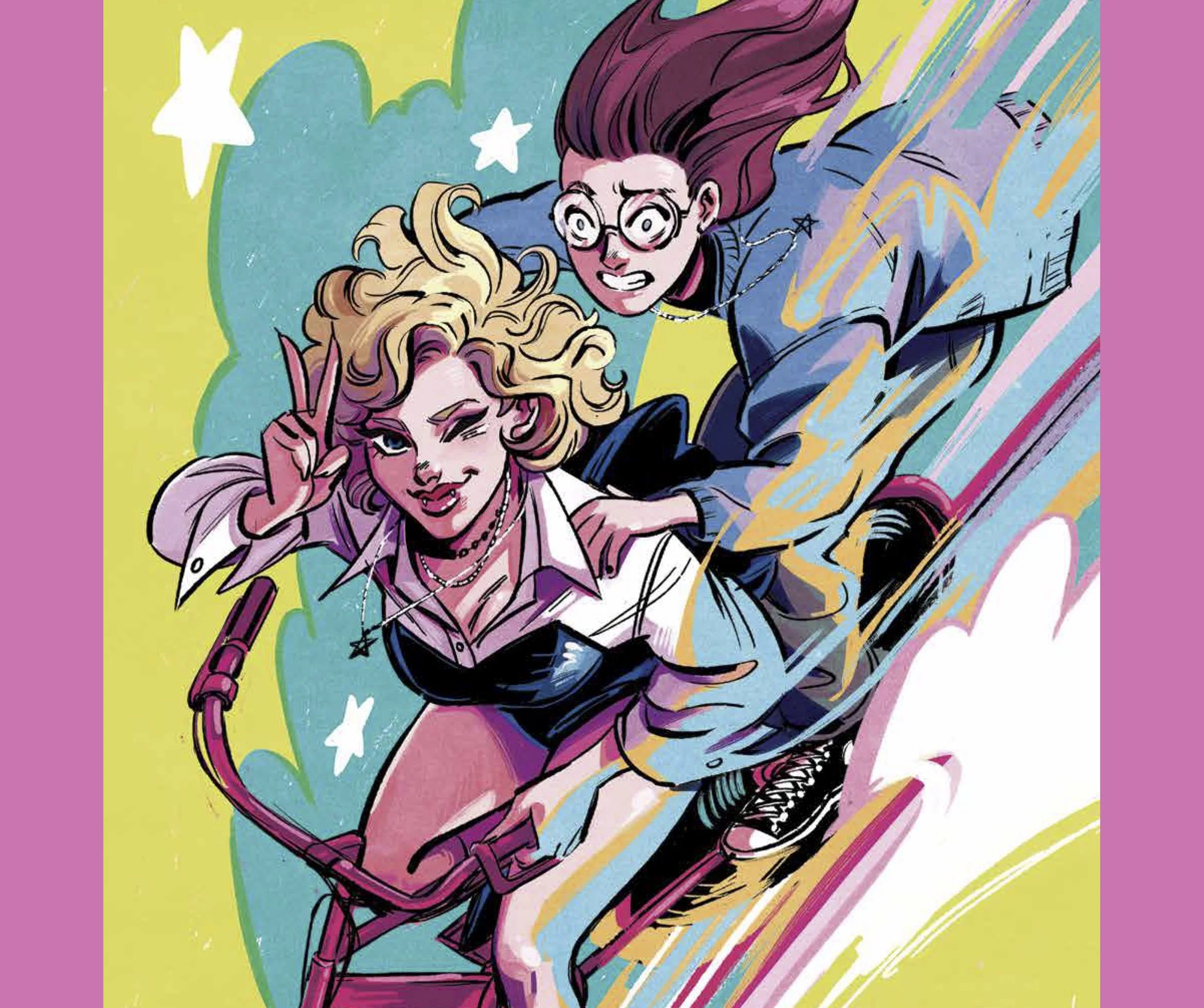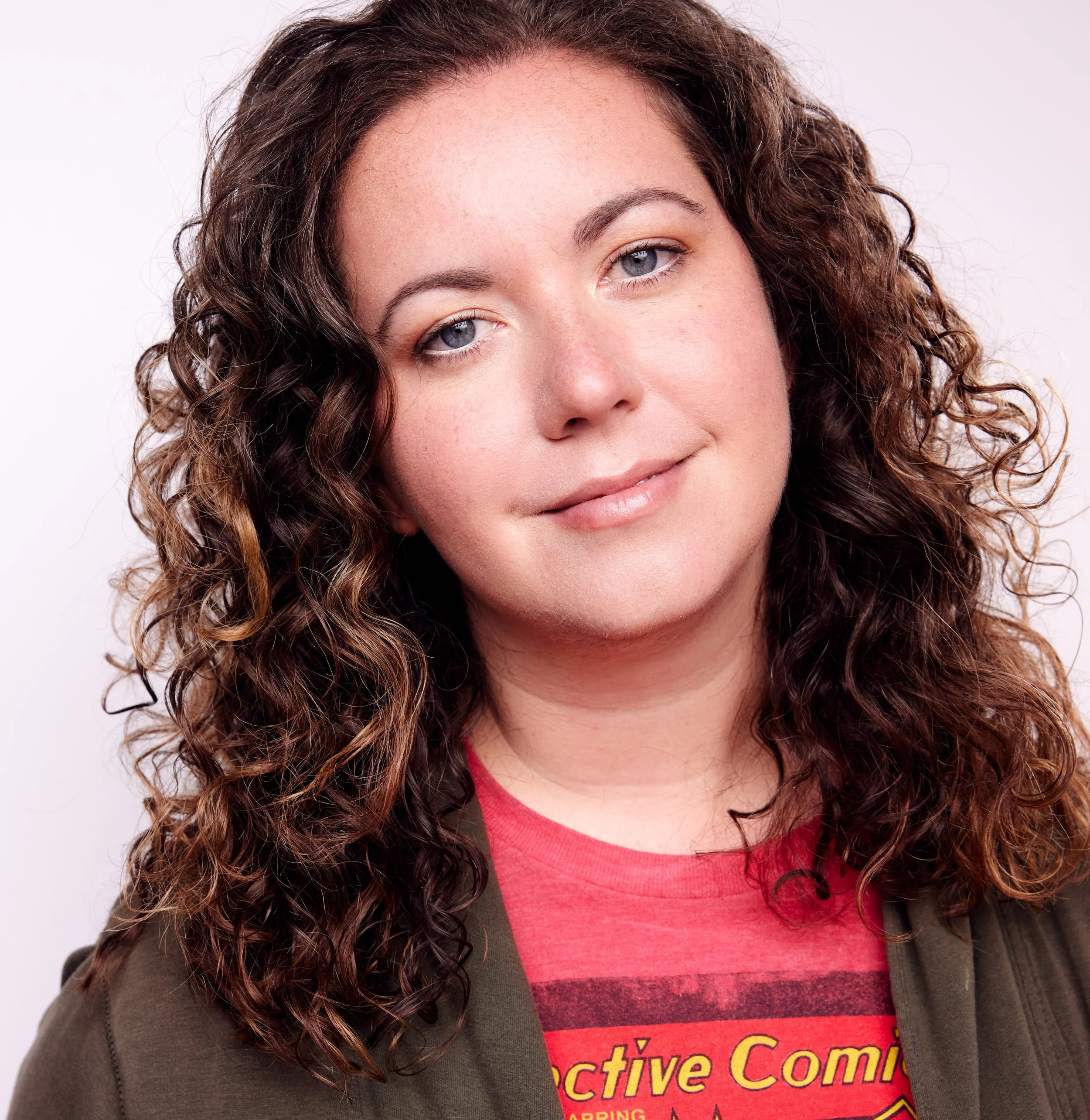Reclaiming the Mary Sue
My new comic interrogates the continued bias against Mary Sues—and brings one life.
by Meghan Fitzmartin
Images throughout are from the first issue of Mary Sue, with words by Meghan Fitzmartin and art by Lisa Sterle. Courtesy: Boom! Studios.
This article is brought to you by Fansplaining’s patrons. If you’d like to help us publish more writing like this in the future, please consider becoming a monthly patron or making a one-off donation!
“I’m in your floorboards with a box cutter” is the best death threat I’ve ever gotten on the internet. Most digital death threats lean heavily on the vague, because it turns out that people who are incensed enough to write death threats to strangers on the internet aren’t often relying on their creative skills. That’s what made this threat so memorable: the specificity and the vivid imagery, even if I wasn’t quite clear on how the poster got in my floorboards, or how much damage they could actually do with a box cutter.
The inspiration for this threat was a DC Comics story I had written about Tim Drake, the third Robin, and this particular social media poster had taken to the comments to express their distaste. In my work for DC, I wrote Tim deciding to go on a date with a boy, canonizing a long-held theory that the character was not as straight as previously believed. Hence, the death threats. I won’t bore you with the more common refrains, especially since I don’t really remember them, their vitriol washing over me like thousand-year-old sewer water off a London duck’s back. At their worst, they were incoherent, and at their best, they were bland, with a smattering of covert to blatant homophobia.
But what made this comment different, apart from the specificity and the imagery, is that it wasn’t about Tim Drake going on a date with a boy—but because off-panel, I’d broken up Tim and his long-time on-again-off-again girlfriend, Stephanie. A fair complaint, even if I didn’t have page space for it. I think that was the other reason why the threat became so memorable: it was the only one that had nothing to do with Tim Drake’s sexuality.
The truth behind all the internet threats can be found in what they aren’t saying. Even though these posters seemed angry about different aspects, they all culminated in the same question: “Why did you turn Tim Drake into a Mary Sue?”
The readers of Fansplaining know that’s not what a Mary Sue is. A Mary Sue is a character, usually female, who’s created by a fanfic writer and has a tendency towards being too perfect. The character everyone is drawn to, that’s best at their job, that all the other characters want to be or be with. My embracing an interpretation of a beloved character and making a subtext textual was not turning him into a Mary Sue, but rather exploring a rich, previously unexplored narrative vein, part of a long tradition of writing for characters that you did not originate.
But it got me thinking: it wasn’t the first time I’d gotten this complaint. As a woman who has made writing male-dominated IP her full-time job, that’s probably the most consistent response I get—sometimes pointedly, but often from people who don’t realize that’s what they’re saying. “Why don’t you just create a new character,” so many men say to me at conventions or professional dinners, “instead of messing with the unchanging image I have in my head of my emotional-support character.”
I have a lot of empathy for these readers. What they’re saying is, “I’ve never had the thing I loved no longer represent exactly how I see myself.” As any woman in geek spaces knows, that is a deep hurt. Women getting fridged, women having no purpose beyond serving the male lead, women being written badly by men. But I never felt the need to criticize these stories by saying, “Hey, you’re writing a Mary Sue!”
So where does this reaction come from? Is the idea that, because I’m a woman, I am therefore prone to writing Mary Sues? Even if the character is a man, I can’t help but taint him with Mary Sue tendencies? Am I, a woman, only able to write Mary Sues in the eyes of men on the internet? And if I do write a female character, no matter how complex and true to my own experience I aim to be, will she always be a Mary Sue? … And is it bad if she is?
And above all, why do audiences find “Mary Sue” to be an insult in the first place? Because I find these questions so interesting, I wrote a comic about it.
Mary Sue (out now at your local comic book shop) is a love letter to fandom, one that would not exist without the brilliant editor Dafna Pleban. We met at a hotel pool during San Diego Comic-Con when a mutual friend said, “Hey, you both like The Untamed, please stop talking to me about it and talk to each other.” And we did.
It’s a joy to find other people in your professional life that speak the same language as you do, with the same reference points. After growing up in a very sheltered religious household with strict, slightly baffling rules on what I could and couldn’t watch, I always feel like I’m catching up on the references of most of my peers. When I worked on the CW show Supernatural, our lunches consisted of these brilliant people I admired trading incredible witticisms about movies I’d never even heard of, leaving me with a recommendation list on my phone that took up almost the same amount of space as my photo library. It was invigorating and exhausting, like a crash course in horror-film history.
I was made better by it, but I also longed for folks that understood my reference points: who shared similar movie recommendations, or who didn’t think Josie and the Pussycats was a flop. When I met Dafna, it wasn’t that we had a similar background or similar interests—it was that we spoke the same language. The Fandom Language.
By that point, I’d spoken my Fandom Language in a professional setting for a couple years. In 2016, I found a community of entertainment professionals who all had secret Tumblrs and AO3 personas. By day, we were working for important and impressive companies, but at night, we would spend hours scrolling fanfic tags and debating tropes. By the time I was introduced to Dafna, I understood the power of the Fandom Language—but our kismet meeting was the first time I realized we could represent ourselves, and speak that language of fandom in a story. And thus, Mary Sue was born.
Mary Sue is centered on Cassie, a big-name author in her favorite fandom, a TV show called Riverview. Make no mistake, Riverview is my masterpiece. Featuring a Roman vampire named Markus (intentionally designed to resemble Spike from Buffy), a time-traveling teen Sherlock Holmes (a heavy-handed Doctor Who/Sherlock reference), and regular girl Alice (there’s always one Regular Girl), they navigate the perils of a vampire apocalypse with every day teen issues. The Vampire Elders are coming, but Alice is getting bullied! The horseman of the apocalypse ruined Alice’s homecoming dress! Witches have burned words onto Alice’s skin, but Markus is dealing with his dead(beat) Roman dad!
Of course, Riverview lived on the bubble for the first few seasons (much like Supernatural), kept alive only by the dedicated fans and the fanfiction. Cassie hopped on the Riverview bandwagon when she was a young teen dealing with big feelings and no outlets. She soon made a name for herself by writing fics about the Mary Sue she created for this universe: JESSICA, a vampire from the 80s, turned by Markus.
Jessica is everything Cassie wishes she could be—and everything she wishes others would be. Someone hot. Someone tall. Someone great at everything, with a sense of fashion, who understands the world around her and always has a quick barb. And, crucially, someone who stands up to bullies.
I, too, wrote Mary Sues when I was first getting into fanfiction. I had one for Star Wars (a teen girl on Tatooine named Mira before I knew about Mara Jade), one for Lord of the Rings (Arwen’s twin sister, obviously), and one for The Lost World (trust me, a perfect show). I found writing Mary Sues a way to give me the courage I needed to tell a story, to explore themes I was working through, in the safe space of a fictional world I loved.
The term “Mary Sue” comes from a 1972 Star Trek zine, and it was, in part, a second-wave feminist plea to the women writing fanfic for this beloved show to stop imagining femininity to look like June Cleaver from Leave it to Beaver. And in 1972, that was a fair criticism. In the mocking of a Mary Sue character, Paula Smith was essentially saying, “Femininity can be so much more than this.”
However, we’re no longer in second-wave feminism. We’ve evolved, and grown to recognize the flaws of the waves that have come before, in an attempt to be as inclusive and loving as possible. But along the way, certain ideas have stayed in the clothes of the past—and today, calling a character a “Mary Sue” essentially says, “Femininity cannot be this.”
But there is no right way or wrong way to express femininity.
I’m not going to be able to change everyone’s minds on Mary Sues with this book, I know that. Some ideas are solidified as canon, and it’s difficult to convince anyone otherwise. But I don’t write for calcified brains—I write for the next generation of fanfic writers and fan artists and fanvid editors. Mary Sue is a reminder to all creatives that Mary Sues are tools that can be used to explore identity or explore themes, like any other form of literature. They deserve to be met in the ideological space with respect, equal to alliteration, allusions, and meta narrative.
The only reason for continually using the concept of Mary Sues as an insult in 2025 is deep, inherent sexism—which has as much place in the world as a box cutter under a floorboard.
Mary Sue is available now at your local comic shop—and you can check out a sneak peak here!
If you liked this article, please help us make more! Become a patron for as little as $1 a month, or make a one-off donation of any amount.
Meghan Fitzmartin worked on the series Supernatural for four seasons, and wrote on DC Superhero Girls, Monkie Kid Season 2, Justice Society: World War 2, and the RWBY v Justice League movies. She’s also known for her work in comics—writing Tim Drake's coming out story in Batman: Urban Legends and the critically acclaimed Tim Drake: Robin. Her creator-owned series Mary Sue is a love letter to fandom.





